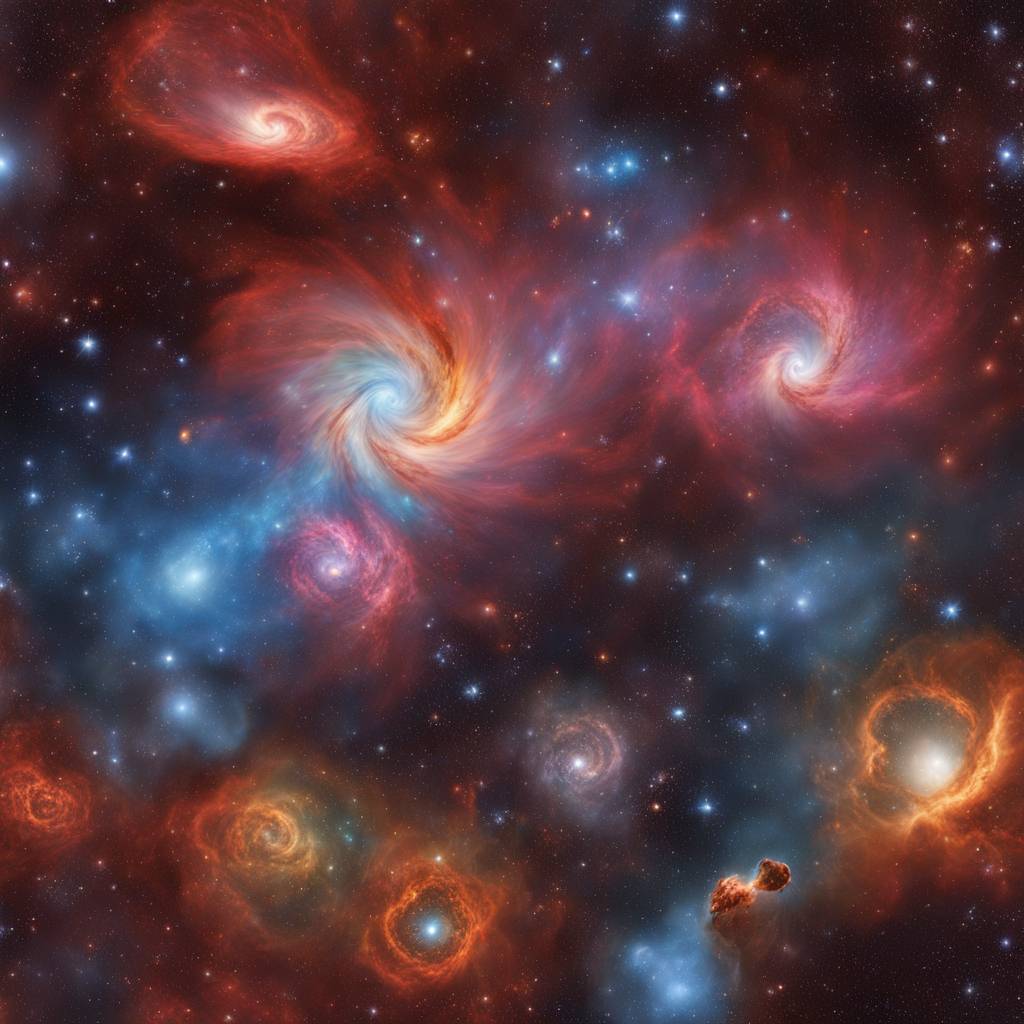The ALMA radio telescope has made a significant discovery by detecting over 100 molecular species in a galaxy where stars are forming at a much higher rate than in the Milky Way. This finding, which includes molecules indicative of different star formation and evolution processes, represents a vast increase in the number of molecules identified compared to previous studies. The team of researchers involved in this discovery now aims to utilize this knowledge to study other galaxies and further understand the process of star formation.
Led by Sergio Martin of the European Southern Observatory/Joint ALMA Observatory, Nanase Harada of the National Astronomical Observatory of Japan, and Jeff Mangum of the National Radio Astronomy Observatory, the team used ALMA to observe the center of the starburst galaxy NGC 253, located about 10 million light-years away in the constellation Sculptor. Starburst galaxies like NGC 253 are characterized by a rapid formation of new stars, though the exact factors that trigger this event are not yet fully understood. This study aimed to investigate the molecular composition of the gas surrounding stars in different stages of their life cycle.
ALMA’s high sensitivity and resolution provided astronomers with the ability to identify the locations of molecules associated with various stages of star formation. The ALCHEMI survey (ALMA Comprehensive High-resolution Extragalactic Molecular Inventory) revealed high-density molecular gas in the center of NGC 253, suggesting active star formation activity. The concentration of dense gas in this galaxy’s center was found to be over ten times higher than that in the Milky Way, potentially explaining why NGC 253 forms stars at a much higher rate – up to 30 times more efficiently than our galaxy.
In addition to detecting a wide range of molecular species in NGC 253, the ALCHEMI survey also provided an atlas of 44 molecular species, doubling the number previously identified outside the Milky Way. By employing a machine-learning technique, the researchers were able to pinpoint which molecules serve as the most reliable indicators of star formation processes from start to finish. This valuable information will assist in planning future observations with ALMA and deepen our understanding of the mechanisms driving the formation of stars in galaxies beyond our own.
The diverse range of molecular species detected in NGC 253 offers valuable insights into the complex processes underlying star formation. By studying the molecular composition of this galaxy and comparing it to the Milky Way, astronomers can gain a better understanding of how different environments affect the formation of stars. This research not only sheds light on the unique characteristics of starburst galaxies but also provides a foundation for further exploration of distant galaxies and their star formation activities.
Overall, the discovery of over 100 molecular species in NGC 253 through the ALCHEMI survey represents a significant advancement in our knowledge of star formation processes in galaxies. With ALMA’s advanced capabilities, researchers have been able to identify key molecules associated with different stages of star formation, paving the way for future observations and a deeper understanding of how stars are born and evolve in galaxies beyond our own. This research has the potential to enhance our understanding of the complex interplay between molecular gas, star formation, and galaxy evolution across the universe.






